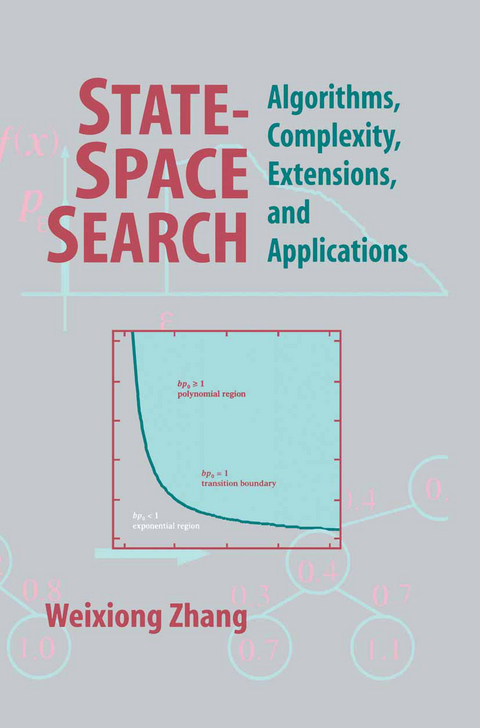
State-Space Search
Springer-Verlag New York Inc.
978-0-387-98832-0 (ISBN)
1 State-Space Search for Problem Solving.- 1.1 Combinatorial Search Problems.- 1.2 Branch-and-Bound Methods.- 1.3 Bibliographical and Historical Remarks.- 2 Algorithms for Combinatorial Optimization.- 2.1 Algorithms for Optimal Solutions.- 2.2 Algorithms for Approximate Solutions.- 2.3 Bibliographical and Historical Remarks.- 3 Complexity of State-Space Search for Optimal Solutions.- 3.1 Incremental Random Trees.- 3.2 Problem Complexity and Cost of Optimal Goal.- 3.3 Best-First Search.- 3.4 Depth-First Branch-and-Bound.- 3.5 Iterative Deepening.- 3.6 Recursive and Space-Bounded Best-First Searches.- 3.7 Branching Factors.- 3.8 Summary of Search Complexity.- 3.9 Graphs Versus Trees.- 3.10 Bibliographical and Historical Remarks.- 4 Computational Complexity Transitions.- 4.1 Complexity Transition.- 4.2 Anomaly in Sliding-Tile Puzzles.- 4.3 Complexity Transition on the Asymmetric Traveling Salesman Problem.- 4.4 Bibliographical and Historical Remarks.- 5 Algorithm Selection.- 5.1 Comparison on Analytic Model.- 5.2 Comparison on Practical Problems.- 5.3 Summary.- 6 A Study of Branch-and-Bound on the Asymmetric Traveling Salesman Problem.- 6.1 Complexity of Branch-and-Bound Subtour Elimination.- 6.2 Local Search for the Asymmetric Traveling Salesman Problem.- 6.3 Finding Initial Tours.- 6.4 Depth-First Branch-and-Bound Versus Local Search.- 6.5 Bibliographical and Historical Remarks.- 7 State-Space Transformation for Approximation and Flexible Computation.- 7.1 Anytime Approximation Computation.- 7.2 Flexible Computation.- 7.3 State-Space Transformation.- 7.4 Properties of State-Space Transformation.- 7.5 Improvements and Extensions.- 7.6 Learning Edge-Cost Distribution and Branching Factor.- 7.7 Experimental Results.- 7.8 Bibliographical and Historical Remarks.- 8 Forward Pruning for Approximation and Flexible Computation, Part I: Single-Agent Combinatorial Optimization.- 8.1 Forward Pruning.- 8.2 Domain-Independent Pruning Heuristics.- 8.3 Forward Pruning as State-Space Transformation.- 8.4 Analyses.- 8.5 Learning Edge-Cost Distribution and Setting Parameters.- 8.6 Experimental Results.- 8.7 Summary and Discussion.- 8.8 Bibliographical and Historical Remarks.- 9 Forward Pruning for Approximation and Flexible Computation, Part II: Multiagent Game Playing.- 9.1 Minimax and Alpha-Beta Pruning.- 9.2 Forward Pruning.- 9.3 Playing Games.- 9.4 Summary and Discussion.- 9.5 Bibliographical and Historical Remarks.- A Basic Concepts of Branching Processes.- B Mathematical Notation.- C List of Algorithms.- References.
| Zusatzinfo | XVI, 201 p. |
|---|---|
| Verlagsort | New York, NY |
| Sprache | englisch |
| Maße | 155 x 235 mm |
| Themenwelt | Informatik ► Theorie / Studium ► Algorithmen |
| Informatik ► Theorie / Studium ► Künstliche Intelligenz / Robotik | |
| Mathematik / Informatik ► Mathematik ► Angewandte Mathematik | |
| ISBN-10 | 0-387-98832-7 / 0387988327 |
| ISBN-13 | 978-0-387-98832-0 / 9780387988320 |
| Zustand | Neuware |
| Haben Sie eine Frage zum Produkt? |
aus dem Bereich


